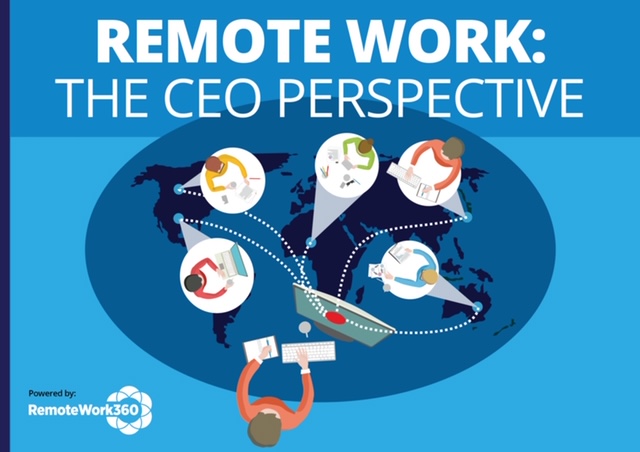Four Steps to Managing Finance & Accounting Work Remotely
- Home
- Supplier Directory
- Attendance & Monitoring
- Collaboration & Communication
- Cloud Telephony & VOIP
- Collaboration & Secure File Sharing
- Communication Software
- Creative Tools
- Culture Building
- Interactive presentations/screen sharing
- Messaging Tools
- Online Training
- Productivity
- Project Management
- Shared workspaces
- Time Tracking
- Video Conferencing
- Virtual Water Cooler
- Web Developer tools
- Finance/Accounting
- HR/Talent Management
- IT
- Managing Remote Teams
- Productivity
- Project Management
- Remote Workplace Wellness
- Sales & Marketing
- eNewsletter
- Events / Education
- About Us
- News
AP/AR Invoicing
ByRemoteWork360
A Quick Start Guide for Finance and Accounting Professionals to Adapt to Managing Processes Remotely
Disruptions to the economy have panicked vendors, customers and employees alike, creating uncertainty and fear. At the same time, quarantines and “shelter in place” orders are wreaking havoc on the accounting and finance routines that you and your team have developed. At risk are not only the efficiency and accuracy of your financial reports, but the very integrity of transactions and the future of your organization.
For the many finance and accounting departments that delayed automation, it means overnighting checks to executives’ homes (where they will need to sign, stuff, seal and mail checks, often without the proper backup that maintains standards and prevents fraud). For those that have made real progress automating operations, there are still major challenges, including team and vendor communication, infrastructure challenges, workload balances and more.
Wherever you are on the automation curve, finance and accounting professionals like you need to adapt—and fast. How you implement change will determine how well you fare not only during the crisis, but also the trajectory of your department into the future.
Here are four steps to ensuring your finance and accounting department’s success no matter where you and your team are located.
Step 1: Buy-in.
Getting your team committed to change is the first step. Normally, this is the biggest challenge in any implementation involving process change or new technology, but we now have a crisis you can’t let go to waste: everyone, from the corner office to line worker, now understands the importance of adapting to current realities and a remote work environment. Don’t take this dynamic for granted: you still need to communicate and involve people, else risk squandering the opportunity and botching your implementation. If you haven’t started a daily team video huddle, start one tomorrow to ensure that everyone has a chance to speak their minds.
Step 2: Triage.
To prevent themselves from getting bogged down in minutiae, smart software developers focus on delivering a “minimally viable product.” That is, they work on only what is necessary, not their full “wish list.” Your first step to adapt is to define those key finance and accounting processes that are critical to your organization. Be ruthless and make the difficult decisions now: your department is unlikely to deliver everything it has previously. The sooner you come to terms with that truth, the sooner you can make forward progress and deliver value.
Step 3: Rethink.
Consider risk in your operations unlike ever before as you redesign processes. In the past, for instance, you may have calculated the dimes or quarters per piece saved (or lost) in making an outsourcing decision. Cost and efficiency, in fact, used to be the driving forces behind most automation efforts. Given the reality of the world today, resiliency and flexibility should be new major considerations as you redesign processes and evaluate technology.
Step 4: Correct.
Accept and embrace the fact that mistakes will be made in any rapid transition, but make continuous improvement a part of your team’s daily routine (make it a standing agenda item in your daily huddle). The key is to limit mistakes to the non-fatal category and instill a culture of adaptation. Be sure to celebrate even small wins use mistakes and errors as learning opportunities rather than moments to punish.
The good news is that there are a variety of finance and accounting technology solutions that can fit organizations of every size, sophistication and with different requirements. Often these solutions are cost effective.
Unfortunately, the pain of making the transition is unavoidable; the process will take longer than planned and will have unforeseen complications. As before, people will be resistant to change and will need to be brought along.
What’s changed is that every organization now understands the importance of resiliency. It’s up to you to lead your finance and accounting department in this new landscape.
Related Posts
An estimated 86.3% of San Francisco employees are working from home, the highest rate among 10 major ...
May 11, 2021
In the third instalment of her blog - you can catch the first, on maintaining creativity here and ...
January 22, 2021
The different “kinds” of remote: finding the right fit your business Covid-19 has turned our world ...
January 14, 2021
RemoteWork360
RemoteWork360.com is powered by Chief Executive Group, which exists to improve the performance of business leaders, build communities and strengthen society.
Latest Insights
COPYRIGHT ©2020 REMOTEWORK360. ALL RIGHTS RESERVED.



